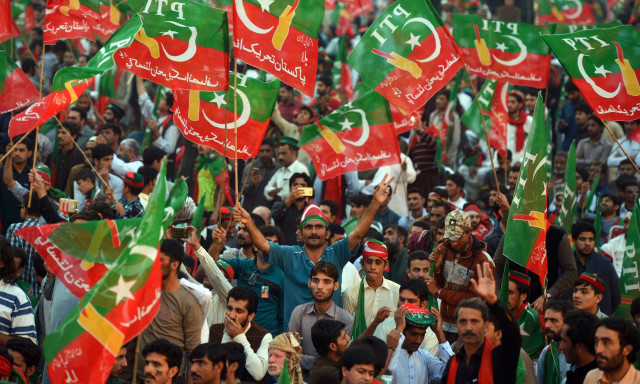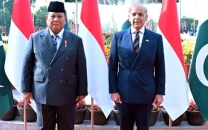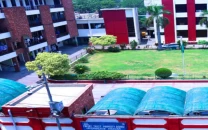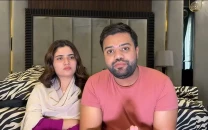Would PTI be able to sustain fortress K-P
Since its ascent in 2013, PTI has carved a significant niche for itself in Pakistan's political landscape

As the political arena is set for the February 8 general elections, all eyes are on Imran Khan's Pakistan Tehreek-e-Insaf (PTI) and its stronghold in the Khyber-Pakhtunkhwa Province (KP).
In a landscape marked by shifting allegiances and emerging challenges, the question looms large: Will PTI sustain its bastion against the odds?
Since its ascent in 2013, PTI has carved a significant niche for itself in Pakistan's political landscape, with KPK playing a pivotal role in its rise to prominence. Leveraging his Pashtun lineage and tapping into the region's geostrategic significance, Imran Khan skillfully navigated the political terrain, particularly amidst protests against US drone strikes in the former Federally Administered Tribal Areas (FATA).
With the renaming of NWFP as KP and the fulfilment of key demands post the 18th amendment, PTI capitalized on the void left by incumbent parties, notably the ANP's lacklustre governance, to embed itself within KPK's cultural fabric.
The infusion of new faces, predominantly from non-political backgrounds, breathed fresh vigour into PTI's narrative, resonating with the aspirations of KPK's populace.
In contrast to Punjab, where PTI mostly relied on traditional politicians, the party's strategic embrace of grassroots leaders fostered a deeper connection with the electorate. This grassroots approach, coupled with PTI's adept navigation of regional dynamics, blurred traditional party lines and bolstered its standing in regions historically dominated by other parties in pockets.
The residents of KP considered PTI as their voice at the national level just like Sindis consider PPP and Punjabis used to consider PML-N.
Imran Khan, while accommodating some traditional politicians, mostly introduced new faces in KPK who belonged to the non-political class. People like Murad Saeed, Atif Khan, Ali Muhammad Khan, Sharhryar Afridi, and Asad Qaisar became PTI’s faces in the KPK.
In Punjab, PTI though tried some new faces, but mostly it banked on traditional politicians and electables who joined PTI leaving their parties as new temporary abodes before they could return to their old homes.
Traditionally, in KPK’s provincial capital Peshawar and its adjoining districts there used to be PPP, ANP and some religious parties as main contenders, in the South it was a mixed trend but dominated by JUI-F and PPP. Jamat e Islami and PPP had strong roots in the Malakand region, while the Hazara Belt belonged to PML-N.
Former FATA areas used to be dominated by independents, usually out of bounds for the political parties before they were merged into settled areas of KPK just before the 2018 general elections.
PTI blurred this peculiar distinction in electoral division and emerged as a strong political force throughout the KPK even in the Hazara belt which was considered the Muslim League’s bastion.
It was for the first time in the recent history of KPK that a party, PTI, could form two successive governments in the province in 2013 and 2018. The party is still a formidable contender against all odds in the country, especially in KPK.
Various surveys during the last few weeks, polls opined that PTI still holds significant popularity in the province.
The upcoming elections present a litmus test for PTI's resilience, particularly in the face of evolving political dynamics. The erstwhile FATA regions, now part of KPK, pose a unique challenge, with PTI contending with a diverse array of competitors, including PTM, JUI-F, and independents. In the southern belt, PTI faces a tight race against JUI-F, with PPP also vying for a foothold. Meanwhile, in central KPK districts, ANP and PTI-P pose formidable challenges, reflecting the intricate tapestry of regional politics.
Seat adjustments between different parties, normally arch rivals and factional manoeuvring further add complexity to the electoral landscape, with ANP, Qaumi Watan Party, and PTI's breakaway faction PTI-Parliamentarian vying for influence in Charsada and Nowshera. Similarly, in the Malakand and Hazara regions, PTI faces strong competition from Jamat-e-Islami, JUI-F, and PML-N, respectively.
Amidst these challenges, analysts offer divergent perspectives on PTI's prospects. Professor Tahir Naeem Malik, an academician who keeps a close eye on the country’s politics underscores PTI's grassroots appeal and its strategic deployment of local leaders, highlighting the party's potential to navigate shifting electoral dynamics.
However, senior journalist Rehmat Mehsood from erstwhile FATA areas warns of obstacles, citing concerns over a lack of a level playing field and PTI's recent setbacks including crackdown on party’s known figures, court convictions of PTI supremo Imran Khan and stripping party of its election symbol would discourage its voters. He predicts a potential resurgence for JUI-F, emphasizing that the religious party in its recent election campaigns is promising to focus on health, education and other service delivery matters contrary to its usual narrative centred around religious narrative. In this recalibration of the narrative towards governance issues, many analysts believe JUI-F also has some backing from powerful quarters.
JUI-F chief Maulana Fazl ur Rehman has recently paid a visit to Afghanistan where he met Taliban leadership ruling the war-torn country. In the changing regional dynamics, Fazl ur Rehman can play an important role in bridging the growing trust deficit between Kabul and Islamabad.
PTI finds itself at a crossroads, tasked with safeguarding its bastion in KPK amidst a landscape marked by uncertainty and opportunity. Whether it can weather the storm and emerge triumphant once again remains to be seen, but one thing is certain: the battle for KPK's political soul will shape the trajectory of PTI as a leading player in Pakistan's political landscape for years to come.



















COMMENTS
Comments are moderated and generally will be posted if they are on-topic and not abusive.
For more information, please see our Comments FAQ